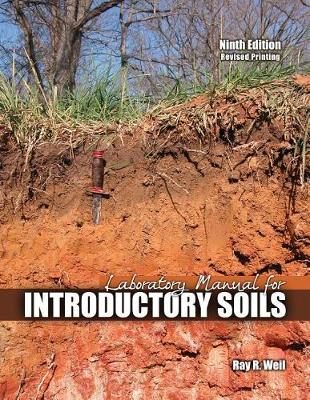The exercises in this manual are designed to encourage the quantitative investigation of soil properties, as well as to give you a ""feel"" for what soils are and how they behave. You will have opportunities to see, touch and manipulate soil in the lab and in the field. This should help you develop a more in-depth understanding of the soil system than could be conveyed by lectures and readings alone. Some of these exercises are really demonstrations of important soil science concepts. Experimental conditions are set up to study the effect of various factors on certain soil properties. It is hoped that ""seeing is believing"" and that these exercises will reinforce principles learned in lecture.
A unifying thread throughout the lab manual is the repeated use of your own soil which you should sample carefully and thoughtfully at the start of the course. By the end of the course you will have built up a substantial body of information about the soil you sampled. The lab work will therefore be most meaningful to you if you make an effort in the beginning to obtain your soil sample from a place with which you interact and in which you have a real interest - e.g. your home garden, your uncle's farm, your research site, or your parent's back yard. Wherever it's from, be sure that you sample a natural, mineral soil - not an artificial soil mix.
Another feature that will help your lab experience have meaning is the ""Comments"" column that is adjacent to the ""Procedural step"" in each exercise. This format is intended to explain the ""why"" of what you are doing, as you are doing it. In their haste to complete a lab activity, students often fall into the trap of carrying out the procedural steps in cookbook fashion without stopping to consider why they are doing each step and what it means. You will be amazed at how much more meaningful each exercise can become if you constantly ask yourself (or better, yet, ask your lab partner) why am I doing this step and what does it mean?
In addition, many of the techniques and approaches employed throughout these exercises will introduce you to some of the basics of scientific instrumentation and the scientific method of investigation. The skills you will learn include: Acquisition and use of online soil survey information; performance of chemical titrations; use and calibration of electronic measuring instruments, e.g. pH meter and spectrophotometer; creation and use of standard curves; ability to estimate soil texture by ""feel""; recognition and description of soil properties in the field. Enjoy!
- ISBN13 9781524928421
- Publish Date 28 February 2020 (first published 1 January 1998)
- Publish Status Active
- Publish Country US
- Imprint Kendall/Hunt Publishing Co ,U.S.
- Edition 9th New edition
- Format Paperback
- Pages 218
- Language English
